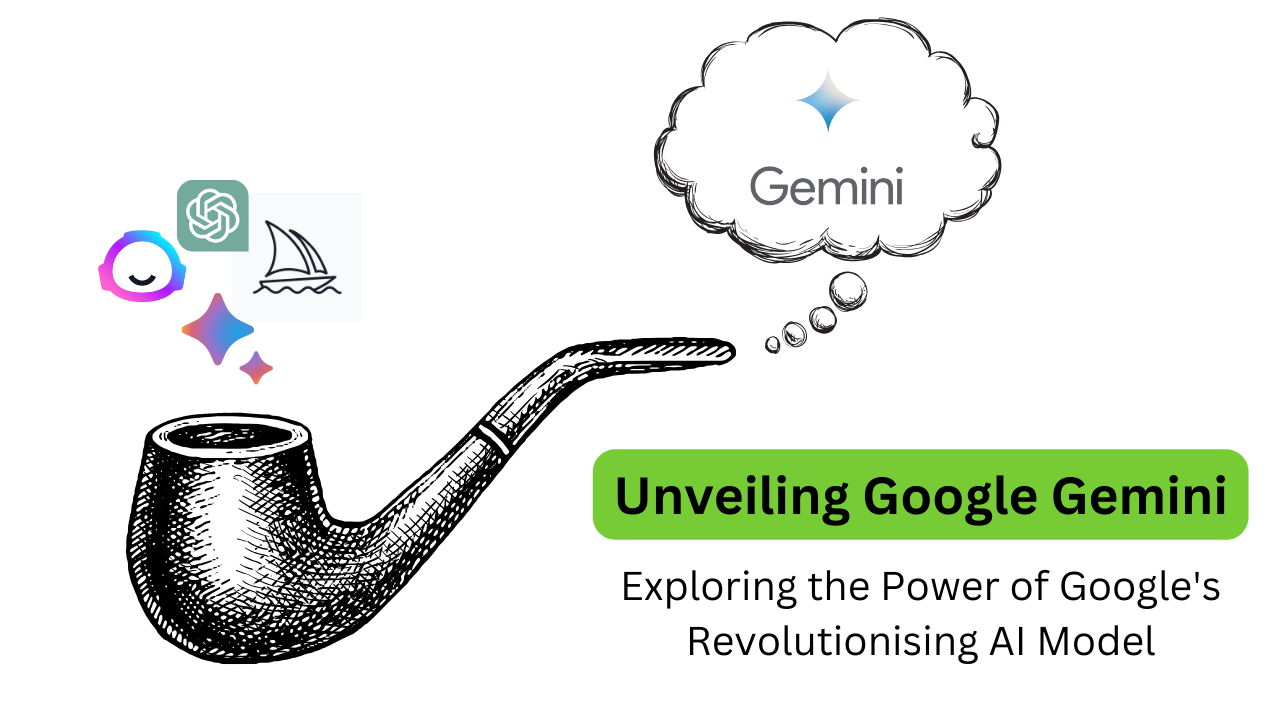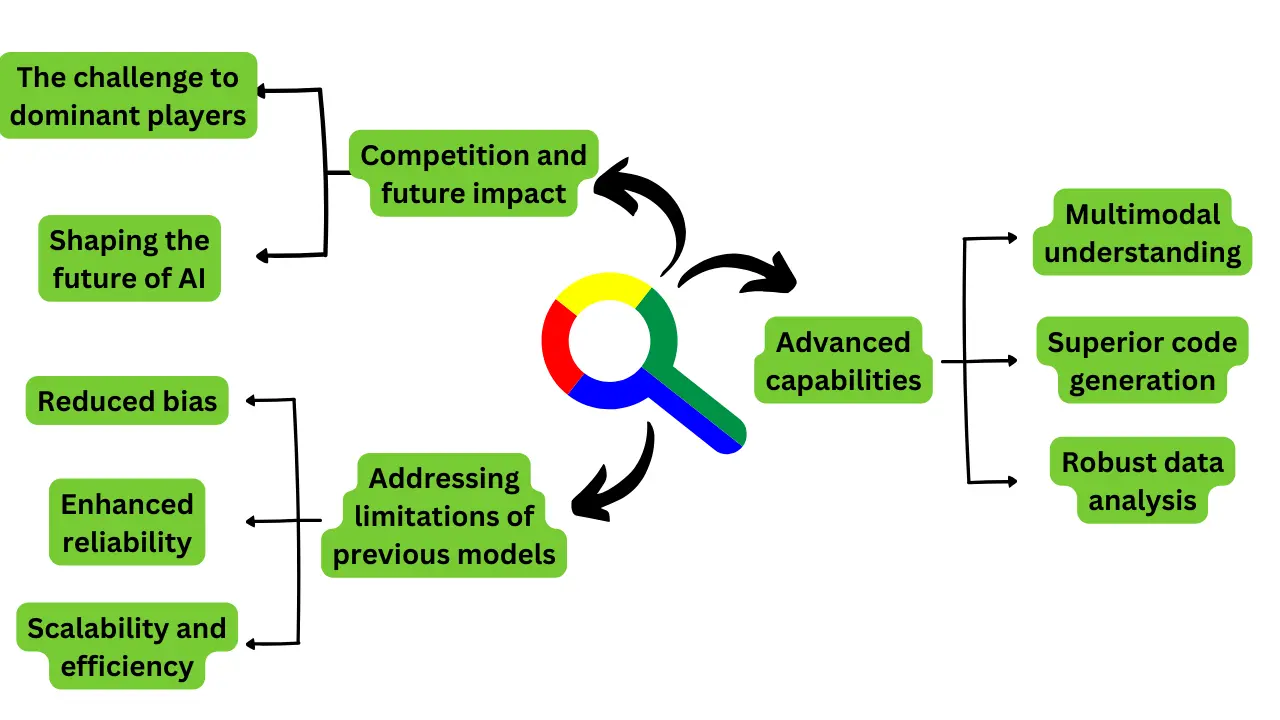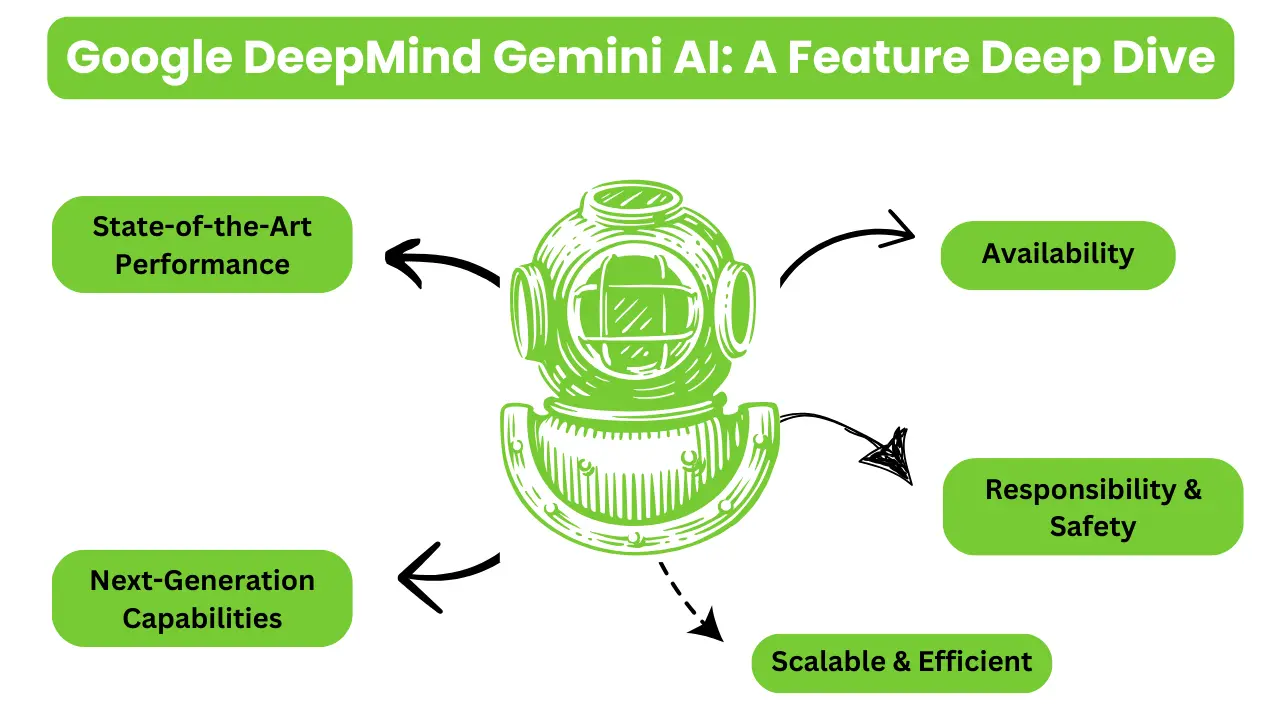Unveiling Google Gemini: Exploring the Power of Google’s Revolutionising AI Model

Rapid technology change is not new ever since use of AI has become absolutely normal! And Google Gemini AI is the trend that you should be aware of.
Artificial intelligence has made life easy for humans and accelerated progress. AI has significantly enhanced people’s lives by automating tedious tasks, facilitating personalised experiences, and advancing medical diagnostics, ultimately fostering efficiency, convenience, and innovation in daily life.
The AI market size in 2022 reached $680 million and is expected to reach $3935.5 million by 2028. In this context, AI expenditure is expected to grow at a CAGR of 39% to touch $11,781 million by 2025.
AI’s continued refinement and integration led to advancements such as predictive analytics, personalised recommendations, and enhanced automation, transforming how businesses operate and individuals interact with technology.
And soon to everyone’s surprise Google launched the Gemini AI model.
Let us read about that in detail.
What is Gemini AI?
Google DeepMind’s introduced its Gemini AI model which was inspired by AlphaGo. The intent was to bring a revolutionary change in AI and outperform OpenAI’s GPT-4.
At its bottom, Gemini AI brings together the strength of AlphaGo and AI models. The model could help to harness the brain power of humans and how they can utilise their time.
Gemini can run on different models like mobile devices and data centres. The AI Model is an optimised version of Gemini 1.0. It has been optimised to 3 different sizes:
|
Model |
Capability |
|
Gemini Nano |
Our efficient model for on-device tasks |
|
Gemini Pro |
Best model for scaling for a wide variety of tasks |
|
Gemini Ultra |
Most capable model for super complicated tasks |
Why did Google develop Gemini AI?

Some of the popular reasons for which Google developed Gemini AI include:
Advanced capabilities:
- Multimodal understanding: Gemini can seamlessly process and analyse various data formats like text, code, images, and audio, unlike most LLMs limited to text alone. This enables it to handle more complex tasks and draw insights from diverse information sources.
- Superior code generation: Gemini generates high-quality code in various languages, even understanding and reasoning about complex information. This has the potential to revolutionise software development and automation.
- Robust data analysis: Gemini’s multimodal abilities and sophisticated reasoning can uncover hidden patterns and insights from vast datasets, aiding in better decision-making and scientific discovery.
Addressing limitations of previous models:
- Scalability and efficiency: Gemini runs significantly faster and requires less computational power than earlier models, making it more accessible and cost-effective for broader applications.
- Enhanced reliability: Google designed Gemini for optimal training and operation stability, minimising potential errors and providing consistent performance.
- Reduced bias: The development process for Gemini incorporates bias mitigation techniques, aiming to mitigate discriminatory or unfair outputs compared to earlier models.
Competition and future impact:
- The challenge to dominant players: Gemini could become a serious competitor to established LLMs like ChatGPT, with its advanced capabilities and multimodal prowess.
- Shaping the future of AI: Google envisions Gemini as a foundation for next-generation AI applications, contributing to breakthroughs in various fields like healthcare, materials science, and robotics.
Google DeepMind Gemini AI: A Feature Deep Dive

Here’s a detailed breakdown of the key features of Gemini AI:
State-of-the-Art Performance:
Multimodality: Gemini can handle various data formats (text, code, images, audio) seamlessly, exceeding text-only LLMs. This allows for:
- A richer understanding of complex tasks.
- Drawing insights from diverse information sources.
- Generating creative content across formats.
These are the first impressions of new landmarks we have created.
Superior Code Generation: Gemini generates high-quality code in various languages. It can:
- Understand and reason about complex code constructs.
- Automate parts of the software development process.
- Generate code snippets optimised for specific performance or efficiency.
Robust Data Analysis: Gemini’s multimodal abilities and advanced reasoning capabilities enable it to
- Uncover hidden patterns and trends in vast datasets.
- Generate hypotheses and test them against real-world data.
- Provide data-driven insights for scientific discovery and decision-making.
Next-Generation Capabilities:
Reasoning and Commonsense: Gemini goes beyond simple pattern matching to understand real-world context and common sense, allowing it to:
- Answer open-ended, challenging, or strange questions.
- Generate creative text formats that are coherent and factually accurate.
- Make inferences and predictions based on available information.
Transfer Learning: Gemini can readily adapt its knowledge and skills to new tasks and domains, making it more:
- Versatile and efficient for diverse applications.
- Capable of lifelong learning and continuous improvement.
Personalization: Gemini can be fine-tuned for specific user needs and preferences, leading to more:
- Tailored and relevant outputs.
- Enhanced user experience and satisfaction.
Scalable & Efficient:
Lightweight and Fast: Gemini operates significantly faster and with lower computational requirements than its predecessors. This makes it more:
- Accessible for broader deployment on diverse devices.
- Cost-effective for businesses and individual users.
- Capable of real-time applications and large-scale data processing.
Modular Architecture: Gemini’s architecture allows for flexibility and customization. This enables:
- Efficient scaling for different resource constraints and task demands.
- Integration with other AI systems and software tools.
- Development of specialised variants for specific domains.
Responsibility & Safety:
Bias Mitigation: Google has incorporated bias mitigation techniques in Gemini’s development, aiming to:
- Reduce discriminatory or unfair outputs compared to earlier models.
- Promote fairness and inclusivity in AI applications.
Explainability and Transparency: Gemini provides insights into its reasoning process and decision-making, allowing for
- Improved trust and understanding of its outputs.
- Identification and correction of potential errors or biases.
- Responsible for the use and development of AI systems.
Safety Guidelines and Governance: Google establishes clear guidelines and governance frameworks for Gemini’s development and deployment, ensuring that ethical considerations are prioritised.
- Risks are minimised, and potential misuse is prevented.
- The benefits of AI technology are maximised for societal good.
Availability:
Currently, Gemini is under development and not yet publicly available. However, Google plans to offer controlled access to select partners and researchers. The broader release timeline and specific access models are still being determined.
Gemini AI Vs ChatGPT
Let us read the difference between Gemini AI and ChatGPT
|
Feature |
Gemini |
ChatGPT |
|
Developer |
Google AI |
OpenAI |
|
Training Data |
Massive text and code dataset, up to cut-off date |
Massive text and code dataset, including real-time updates |
|
Knowledge Base |
Limited to training data |
Can access and integrate external knowledge base |
|
Strengths |
Superior in complex reasoning tasks, arithmetic, and understanding human drawings. It Can interpret simple abstract drawings and infer meaning. The tool creates high fluency and quality, but may exhibit bias or factuality issues. |
Generates highly creative and engaging text formats, excels in imaginative tasks. Produces smooth and natural-sounding text, adapts well to different writing styles. Widely available through various APIs and platforms. |
|
Weaknesses |
Currently only accessible through research collaborations with Google. Lacks access to real-time information, limiting currency in responses. Can inherent biases from training data, requiring careful prompting and user awareness. |
May generate factually incorrect or misleading information, especially in open-ended contexts. The AI model can struggle with complex reasoning tasks and abstract concepts. Lacks ability to interpret visual information beyond text. |
|
Best for |
Research tasks requiring advanced reasoning and logic, tasks involving visual interpretation, text generation with accuracy and control. |
Creative writing, storytelling, generating different text formats, adapting to different writing styles, general conversational interactions. |
After reading the comparison between the two AI models, let us now read further the future aspect of Gemini AI.
Gemini Era-Future of the AI
The arrival of Gemini AI marks a new era. Its multimodal prowess, next-generation capabilities, and commitment to responsible development pave the way for a future where AI seamlessly integrates into our lives, amplifying human potential.
Imagine personalised education powered by Gemini’s nuanced understanding, scientific breakthroughs fueled by its ability to glean insights from diverse data, and creative endeavours enhanced by its code-generating prowess.
This is the Gemini Era, where AI ceases to be a separate entity and becomes a collaborative partner, pushing the boundaries of what’s possible and shaping a brighter, more interconnected future.
We are witnessing an era where changes are not deceptive. Every small change brings for us an opportunity to learn. Read more blogs here, for more trends and information on digital marketing.
Also Read – The Ultimate Guide to Understanding and Using AI Models (2024)





Comments
I’m always learning something new from your posts.